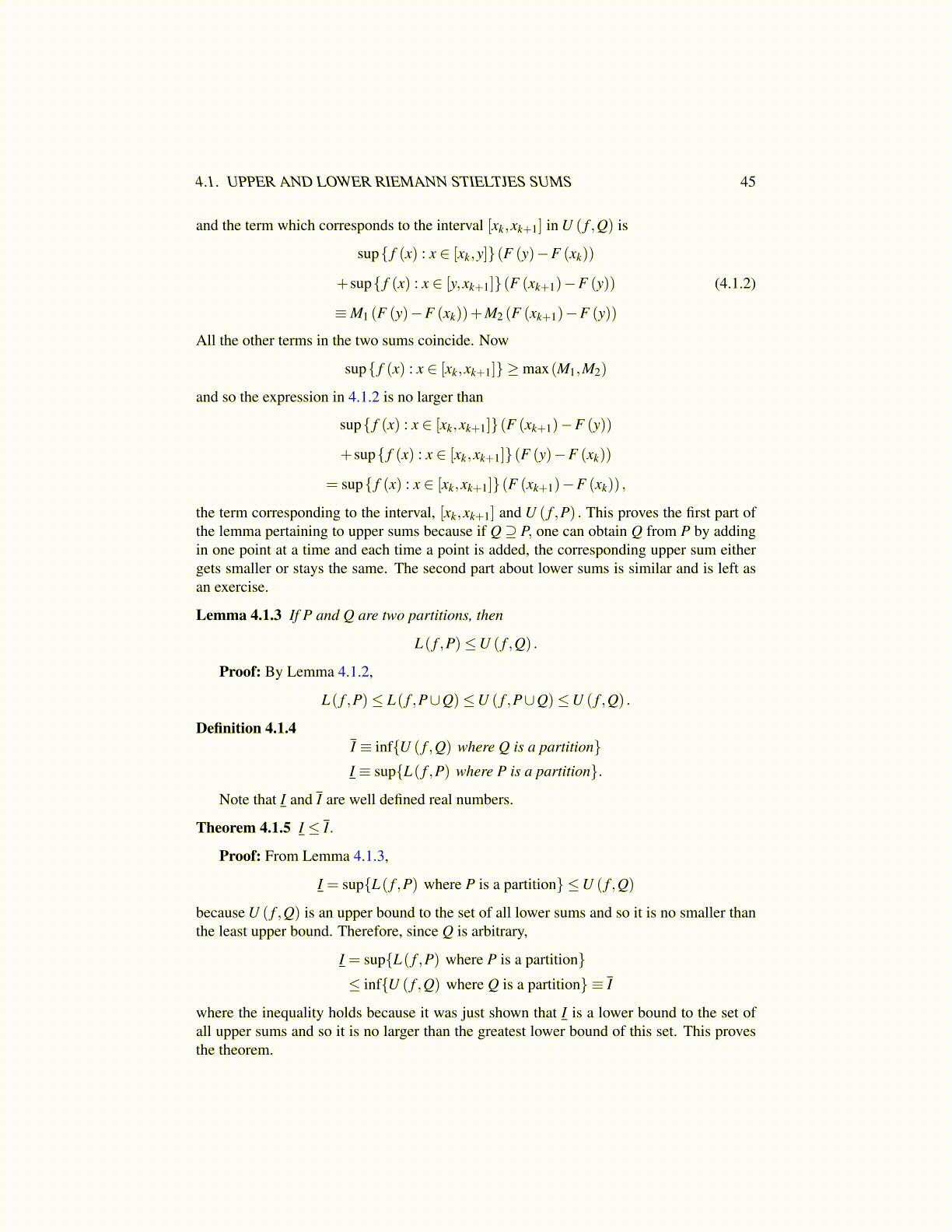
4.1. UPPER AND LOWER RIEMANN STIELTJES SUMS 45
and the term which corresponds to the interval [xk,xk+1] in U ( f ,Q) is
sup{ f (x) : x ∈ [xk,y]}(F (y)−F (xk))
+sup{ f (x) : x ∈ [y,xk+1]}(F (xk+1)−F (y))
≡M1 (F (y)−F (xk))+M2 (F (xk+1)−F (y))
(4.1.2)
All the other terms in the two sums coincide. Now
sup{ f (x) : x ∈ [xk,xk+1]} ≥max(M1,M2)
and so the expression in 4.1.2 is no larger than
sup{ f (x) : x ∈ [xk,xk+1]}(F (xk+1)−F (y))
+sup{ f (x) : x ∈ [xk,xk+1]}(F (y)−F (xk))
= sup{ f (x) : x ∈ [xk,xk+1]}(F (xk+1)−F (xk)) ,
the term corresponding to the interval, [xk,xk+1] and U ( f ,P) . This proves the first part ofthe lemma pertaining to upper sums because if Q⊇ P, one can obtain Q from P by addingin one point at a time and each time a point is added, the corresponding upper sum eithergets smaller or stays the same. The second part about lower sums is similar and is left asan exercise.
Lemma 4.1.3 If P and Q are two partitions, then
L( f ,P)≤U ( f ,Q) .
Proof: By Lemma 4.1.2,
L( f ,P)≤ L( f ,P∪Q)≤U ( f ,P∪Q)≤U ( f ,Q) .
Definition 4.1.4I ≡ inf{U ( f ,Q) where Q is a partition}I ≡ sup{L( f ,P) where P is a partition}.
Note that I and I are well defined real numbers.
Theorem 4.1.5 I ≤ I.
Proof: From Lemma 4.1.3,
I = sup{L( f ,P) where P is a partition} ≤U ( f ,Q)
because U ( f ,Q) is an upper bound to the set of all lower sums and so it is no smaller thanthe least upper bound. Therefore, since Q is arbitrary,
I = sup{L( f ,P) where P is a partition}≤ inf{U ( f ,Q) where Q is a partition} ≡ I
where the inequality holds because it was just shown that I is a lower bound to the set ofall upper sums and so it is no larger than the greatest lower bound of this set. This provesthe theorem.